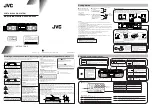
detects a break in communication after the failure of the second repeat attempt and reports
this to the higher-level CPU.
Data types
Four data types are available:
• Process data → Cyclic data
• PQI → Cyclic data
• Device data → Acyclic data
• Events → Acyclic data
Process data
The process data of the devices is transferred cyclically in a data frame with the process data
size being determined by the device. Process data from 0 to 32 bytes is possible per device
(input and output, respectively).
Port Qualifier Information (PQI)
Each port has a Port Qualifier Information (PQI). This PQI provides information on the device
status of the port and IO-Link (value status). The PQI is transmitted cyclically with the process
data. The PQI is disabled by default.
Device data
Device data can be parameters, identification data or diagnostic information. The data is
exchanged cyclically and at the request of the IO-Link master. Device data can be written to
the device and also read from the device.
Events
When an event occurs, the device signals to the master that an event is present. The master
then reads the event. Events can be error messages (for example, short-circuit) and
warning/maintenance data (for example, dirt, overheating).
Error messages are transferred from the device to the CPU or the HMI by the IO-Link master.
The IO-Link master can also transfer events and states. Such events are, for example, wire
break, break in communication or overload.
Device parameters or events are transmitted independently of the cyclic transmission of
process data. The transmissions do not influence or impair each other.
Startup of the IO system
If the port of the master is set to IO-Link mode, the IO-Link master attempts to communicate
with the connected IO-Link device. For this purpose the IO-Link master sends a defined signal
and waits for the reply of the IO-Link device.
14
IO-Link system
Function Manual, 07/2022, A5E31637677-AC
System overview
2.4 IO-Link protocol















































